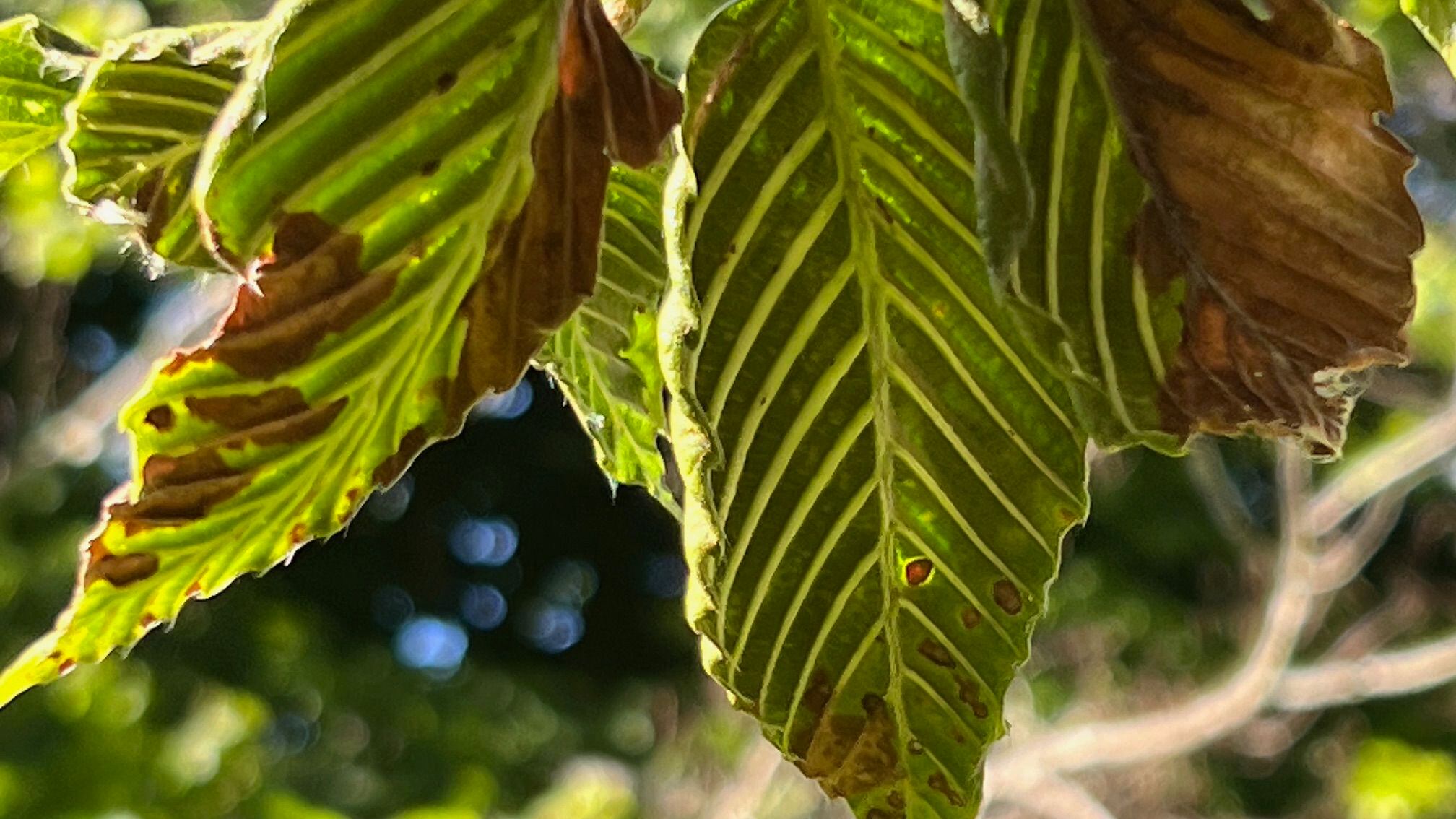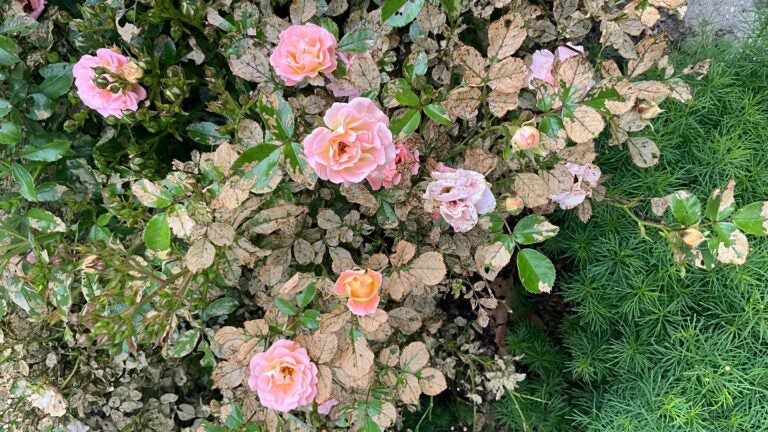Gardening
Thank you for all of the questions (and photos!) you’ve been sending. Please appreciate that our column space limitations are a serious constraint and that I am trying to answer as many as I can.
As the end of June arrives, our gardening tasks can seem overwhelming, with everything showing robust growth, especially the weeds. There’s so much still to do before the summer heat and humidity set in. Some people think that once Memorial Day comes, planting in the garden should end, but nothing could be further from the truth. Yes, dividing and moving bare-root plants is best done during their dormant seasons, but anything still available at your local independent garden center is fine to install. Just be sure to follow the planting and watering guidelines needed to get the roots established.
Here are three foliage questions, each with very different answers:
Q. Two weeks ago, my rosebush was green and healthy looking. Now the leaves are brown. Can you help me understand what happened? Will it recover? How can I prevent it in the future? Thank you.
M.M.
A. Your rose appears to be affected by rose slug sawfly larvae, which feed on the leaf undersides. As you mentioned, this infestation rapidly skeletonized and browned the leaves, and it’s probably too late now to curb the damage, but the rose slug sawfly has only one generation each year. New growth will help hide the damaged foliage, which should drop off, and your rosebush should grow normally for the rest of the summer. To prevent this next year, check the foliage in April-May, remove any larvae by hand, or apply insecticidal soap or an insecticide recommended for larvae control.

Q. My mountain laurel blooms infrequently. I noticed a lot of the leaves have spots like this. It is located in part shade near a large white pine. Should I be concerned?
LIZ, Newton
A. The new growth on your Kalmia latifolia photo looks vigorous and healthy. Yellowing and spotting on last year’s leaves is normal after wintertime, and you need not be worried; any damaged leaves will drop with warmer weather. Low light levels can reduce the amount of flowering. If you allow more sunlight to reach the plant by pruning some pine branches, there’s still plenty of time for next year’s flower buds to form.

Q. This American beech tree on our property looked perfectly healthy last fall. This spring every leaf is affected as depicted in the photo. An invasive nematode has been identified as the culprit. This is worthy of a major article, as these majestic trees are becoming rapidly infested, and from what I have read, there is no known effective treatment. Several mature trees on adjacent properties are also affected. Is there any hope for saving the American beech or will it go the way of the American elm and chestnut trees?
S.K.
A. The sudden appearance of this new pathogen alarms all of us who cherish the majesty of our native Fagus americana and the European beech, both of which appear to be susceptible. Called “beech leaf disease,” it’s reportedly caused by a nematode (microscopic worm) that disrupts the ability of a leaf to photosynthesize, and eventually kills it. No way to prevent its spread has been discovered, but ongoing research suggests specific pesticides may help the tree resist the nematodes. An article in last Sunday’s Boston Globe Magazine provided more detailed information. A manager at Bartlett Tree Service recently told me that they are now using treatments that have proved effective in managing the disease.
R. Wayne Mezitt is a third-generation nurseryman, a Massachusetts Certified Horticulturist, chairman of Weston Nurseries, and owner of “Hort-Sense,” a horticultural advisory business. In addition to serving as editor in chief for the Massachusetts Horticultural Society Leaflet, an electronically published monthly member newsletter, he chairs the Massachusetts Invasive Plant Advisory Group. Please send your questions to [email protected].
